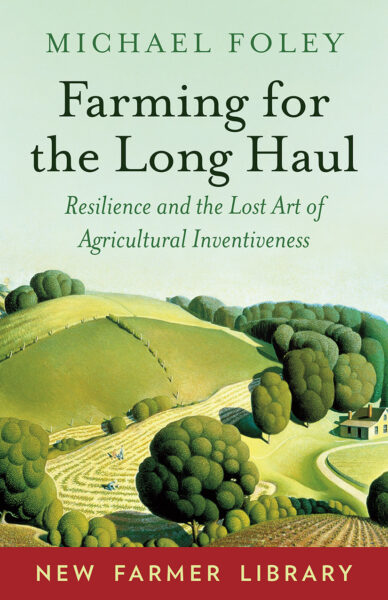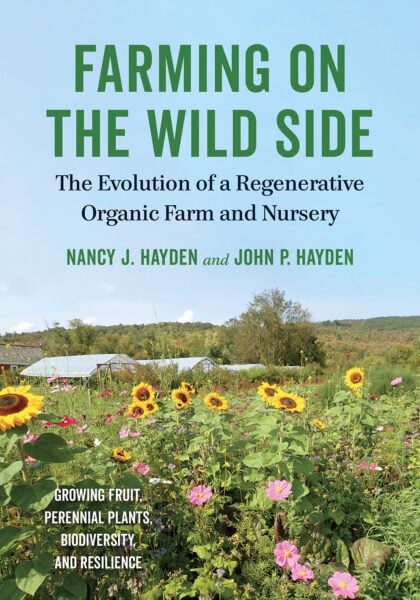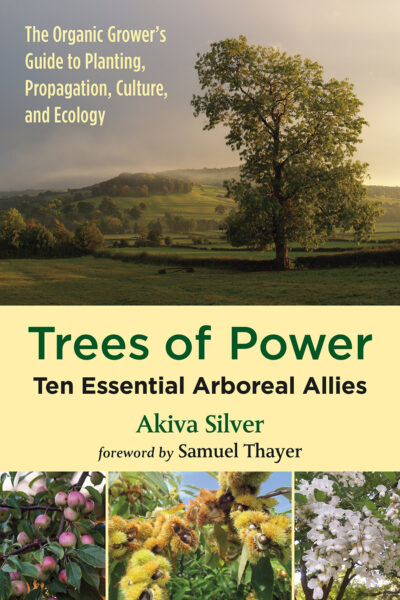The Importance of Carbon Farming
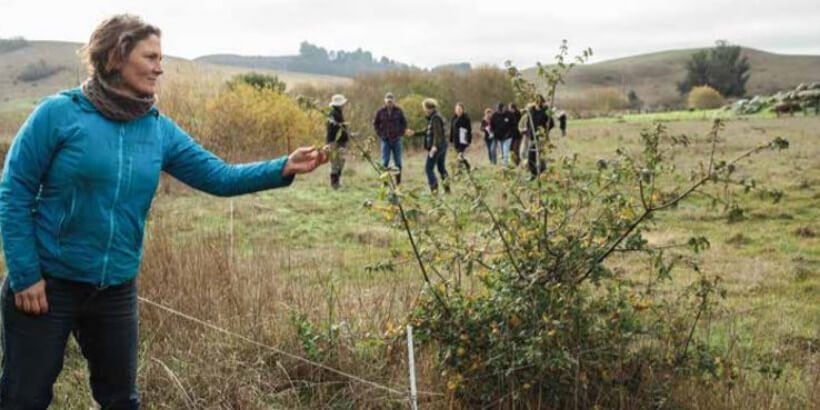
To get a sense of how carbon farming could positively affect global warming, imagine ten ranches, approximately three-hundred acres each, implementing carbon farming and achieving a conservative per acreage carbon sequestration rate. At this scale, the net gains of CO2 removed from the atmosphere (over 20 years) is equal to the emissions that 25,532 passenger vehicles produce in a year. These numbers illuminate the tie between water and carbon and reinforce how we can support working lands and become increasingly more resilient to longterm dry periods by focusing our attention on carbon in the soils.
Practices that damage or destroy the ability for self-renewal should be discontinued, including tillage, overgrazing, using diesel as an energy source, and applying fossil-fuelbased fertilizers, pesticides, and herbicides.
The following is an excerpt from Fibershed by Rebecca Burgess. It has been adapted for the web.
Prefer audio?
Listen to the following excerpt from the audiobook of Fibershed.
California’s most recent lengthy drought, which began in 2013 and persisted into 2017, was so serious that it arguably had no historical precedent and provoked a group of collaborating organizations in my fibershed to hasten the implementation of soil carbon-building projects throughout our region’s working lands.
The need for increasing our soil’s ability to retain moisture was becoming a stark life-or-death reality.
The conversation that emerged focused upon the ecological function of whole farms or ranches. In other words, if we focus on how to enhance the quantity of the sun’s energy brought into our entire farming system through its plants and the carbon they generate, the entire ecosystem benefits. This way of engaging with the land through a carbon lens has generated a body of practices known as carbon farming. Some call it ecologically enhancing agriculture, but calling it carbon farming keeps our eyes on the goal of drawing down greenhouse gases by focusing on the principal element that is both a source of concern and a tremendous benefit to society.
Carbon farming involves implementing practices that are known to improve the rate at which CO2 is removed from the atmosphere and transformed into plant material and soil organic matter. It is successful when soil carbon gains resulting from land management exceed soil carbon losses. Famed American writer and conservationist Aldo Leopold said, “Land health is the capacity for self-renewal in the soils, waters, plants, and animals that collectively comprise the land.”
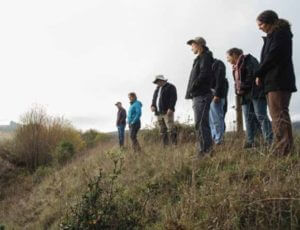
The Fibershed Carbon Farm cohort meets along a freshwater creek at Freestone Ranch to study the flow of the water and the impacts of a series of good winter rains.
Carbon farming is an approach for engaging and sustaining this ability for “self-renewal.” Practices that damage or destroy the ability for self-renewal should be discontinued, including tillage, overgrazing, using diesel as an energy source, and applying fossil-fuel- based fertilizers, pesticides, and herbicides. Practices that encourage self-renewal should be encouraged, including keeping the soil covered yearlong with living plants, minimizing soil disturbance, increasing plant and animal diversity, and managing livestock according to planned grazing principles.
Many of the practices and principles embodied in carbon farming have demonstrated their value globally but remain underutilized by farmers and ranchers, raising the question of how to inspire their adoption more widely. Agriculturalists often work with very tight financial margins and have to make difficult decisions on a day-to-day basis that frequently involve constantly changing variables, including the weather, animal health, equipment function, and labor.
These constraints impede the implementation of innovative practices, especially if they require cash or capital investments. To encourage a rancher to convert to carbon-enhancing management, a new approach to financial incentives is required, one that not only reduces the financial risk that comes with changing practices but also encourages farmers and ranchers to move quickly—for good reason. Christiana Figueres, executive secretary of the United Nations Framework Convention on Climate Change, has stated that in order to keep our planet from exceeding a crippling two-degree Celsius rise in global temperature, emissions must peak by 2020.
“Some say that is impossible but is impossible is an attitude, not a fact. Agriculture has a critical role to play, both in dramatically reducing emissions and by providing a sink to draw down carbon from the atmosphere,” Figueres told a room of scientists, farmers, and policy makers during a 2017 Sequestering Carbon in Soil conference held in Paris, France.
In the United States recent developments have allowed the capture and storage of atmospheric CO2 in soils to become both practical and verifiable. One is the Carbon Farm Planning (CFP) process developed by Dr. Jeffrey Creque, a rangeland ecologist with the Carbon Cycle Institute in Petaluma, California. The CFP focuses on increasing the capacity of the working farm or ranch to capture carbon and store it in vegetation and soil organic matter. CFP is based upon the planning process developed by USDA’s Natural Resources Conservation Service but uses carbon and carbon capture as the organizing principle around which agricultural plans are constructed, connecting on-farm practices directly with ecosystem processes.
Carbon Farm Planning starts with an inventory of natural resource conditions on the farm or ranch but with a focus on opportunities for reduction of greenhouse gas emissions and enhanced carbon capture and storage. The inventory is transferred to one or more maps of the ranch, which are then used to mark potential carbon-capture locations such as silvopasture (incorporating trees in a pasture system) or stream restoration projects, with the overall goal of envisioning how the farm or ranch may be expected to perform years into the future. Next, the carbon benefits of each project and agricultural practice are quantified to estimate how many tons of carbon dioxide and other greenhouse gases would be either reduced as an emission or sequestered in the soil.
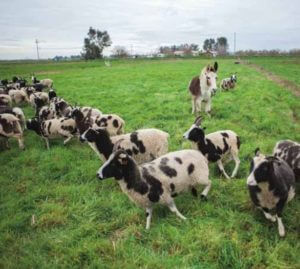
Jacob sheep rotating to a new pasture at Robin Lynde’s Meridian Jacobs farm.
A menu of practices and benefits is then developed and prioritized based on the needs and goals of the farm or ranch, and economic considerations are factored in, including potential funding sources. After implementation, the CFP is monitored and updated to meet changing conditions, objectives, and new opportunities while sticking to the overall carbon goal.
The modeling program that estimates and tests greenhouse gas emissions and soil carbon sequestration is called the Carbon Management and Evaluation Tool (COMET) and was developed by Colorado State University. While the tool was originally designed for commodity agriculture, the CSU team were open to refining it for a number of different farming practices and specialty crops. Since then the COMET model has grown to cover many diverse on-farm practices.
Today it has become a platform for farmers and ranchers to estimate greenhouse gas emissions from their activities and assess scenarios to reduce those emissions and increase carbon in soils and vegetation. COMET allows agriculturalists to run “what-if” scenarios about how changes in their crop and livestock management could have a climate impact and then track the implemented changes on the landscape over time.
According to Dr. Keith Paustian (a lead scientist who works on the model), COMET is based on more than forty different greenhouse gas emission models developed by scientists. “Each of the models predicts the greenhouse gas emissions or carbon sequestration associated with a different aspect of farming crops and managing livestock,” Paustian said, “such as applying fertilizer, growing trees, storing livestock manure, or managing organic matter in soils. The model was developed using several decades of research in soil carbon and nitrogen dynamics, and it has been validated against literally hundreds of experiments.
Included in the first cohort of carbon farm plans were two ranches in drought-impacted areas in California—Modoc and Santa Barbara Counties. At the time, these ranches had been heavily impacted by multiple years of below-average precipitation. Jeffrey Creque, local resource conservation districts, and representatives from the Natural Resources Conservation Service worked in these locations to draft a management plan for the family-owned ranches that included multiple and layered strategies for improved carbon capture, including windbreaks, hedgerows, freshwater (riparian) creek restorations, managed grazing plans, and the addition of compost to the rangelands.
In the Modoc County ranch, the greenhouse gas impact was measured in carbon dioxide equivalents, and the forty-five-hundred-acre land base was determined to have the ability to sequester 111,581 metric tons of CO2e over the twenty-year span of time required to see many of the projects into maturity. This is equal to the emissions produced by 23,740 passenger vehicles in a year. The increase in soil water-holding capacity at the ranch was measured at over 520 acre-feet (169.5 million gallons or twenty-two million cubic feet). This amount of water-holding capacity is equivalent to the amount of water used by 1,730 California households in a year.
In the case of the Santa Barbara carbon farm plan, which was developed for an eight-thousand-acre ranch, the estimated sequestration potential over a twenty-year period is two hundred thousand metric tons of CO2e, the amount of emissions produced by 43,478 passenger vehicles in one year. If implemented the plan will also increase the water-holding capacity of the soil by nine hundred acre-feet (293 million gallons or thirty-nine million cubic feet), equivalent to thirty-one hundred households—a savings that would exceed the ranch’s current surface water capacity by 1,800 percent.
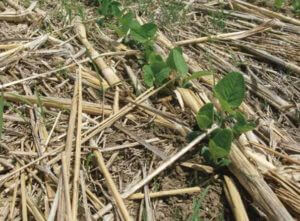
No-till planting directly into crop stubble from the prior growing season. Photo by Maggilautaro.
Predicting carbon and water impacts through the use of the computer models that exist today is currently the most affordable way to enable understanding of the impact of land management.
There are systems emerging that will hopefully become more common and accessible in the future, focused upon collecting farmers’ and ranchers’ real-time data (through sensors and satellite imagery); this would provide immediate feedback on ecological impacts of management decisions.
Pilot projects are being initiated to establish new economic platforms that will allow ecosystem service payments to be made to farmers and ranchers for creating ecological value based on real-time data derived from working landscapes. The work to monitor ecological function in present time is currently expensive to scale. Like all new technologies it will be important to continue to direct its usage for the purpose of closing wealth gaps and establishing greater value for the work that humans do that builds lasting prosperity for future generations.
Recommended Reads
Recent Articles
With the right strategies and practices, composting on a small farm is surprisingly easy and inexpensive. Just follow these steps for making compost, and your farm will be thriving in no time! The following excerpt is from The Lean Farm Guide to Growing Vegetables by Ben Hartman. It has been adapted for the web. (All photographs by Ben…
Read MoreGarlic mustard: while known as “invasive,” this plant can be consumed in its entirety and has great nutritional value. Plus, the garlic-flavor is a perfect addition to any recipe that calls for mustard! The following are excerpts from Beyond the War on Invasive Species by Tao Orion and The Wild Wisdom of Weeds by Katrina…
Read MoreEveryone loves a refreshing, fermented, nutritious drink…even your garden! Take your fermentation skills out of the kitchen and into the garden by brewing fermented plant juice. The following is an excerpt from The Regenerative Grower’s Guide to Garden Amendments by Nigel Palmer. It has been adapted for the web. How to Make Fermented Plant Juice Fermented…
Read MoreWant to see your crops thrive this upcoming growing season? The key is in soil fertility and health. Spend time maintaining your soil’s health to guarantee bigger and better crops come harvest time! The following is an excerpt from No-Till Intensive Vegetable Culture by Bryan O’Hara. It has been adapted for the web. What Is Soil Fertility?…
Read MoreMany know the effects of catnip on our feline friends, but few realize that catnip has medicinal effects for humans. From stomach aches to reducing fevers, catnip is a versatile herb with many benefits. The next time you grow this plant for your cat you may end up taking a few cuttings for yourself! The…
Read More


